The American Southwest is a vast area, covering all of Arizona and New Mexico as well as parts of California, Nevada, Texas and Utah. The regions of the Southwest are varied and include low deserts, high deserts and mountainous regions, covering USDA zones 5 though 9.
Temperatures in February can swing from below freezing on cold days up to the 70s on others, depending on what region you live in. In many areas of the Southwest, we are fortunate to be able to garden through the winter. This month enjoy the fruit from your citrus trees (and share some with your neighbors). Plant some new roses; add beautiful, cold-hardy flowering plants; and get your vegetable garden ready for spring.
More regional garden guides
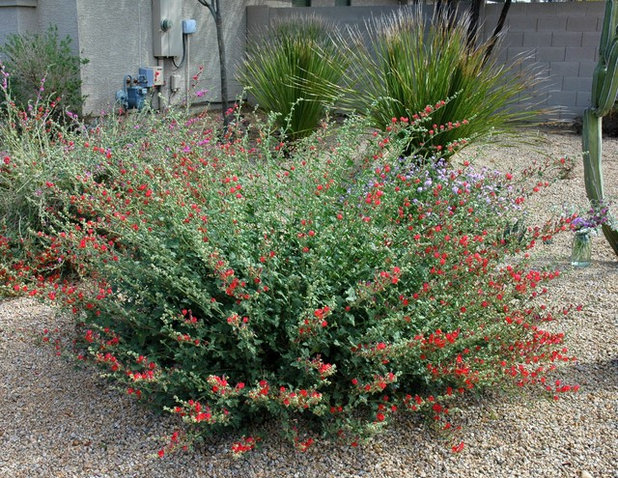
Noelle Johnson Landscape Consulting
Low deserts (up to 3,000 feet). Plant cold-hardy flowering natives, such as
firecracker penstemon (Penstemon eatonii),
chaparral sage (Salvia clevelandii),
globe mallow (Sphaeralcea ambigua) and
Mexican honeysuckle (Justicia spicigera), which will add beautiful color to your garden.
Temperatures can still drop below freezing in February. Be sure to protect frost-sensitive plants, such as
lantana (
Lantana spp)
and
bougainvillea (
Bougainvillea spp)
with frost cloth. Old towels or sheets will also work in a pinch.
Toward the end of winter, sow seeds for basil, peas, peppers and tomatoes in your vegetable garden.
Shown: Globe Mallow (
Sphaeralcea ambigua 'Louis Hamilton')
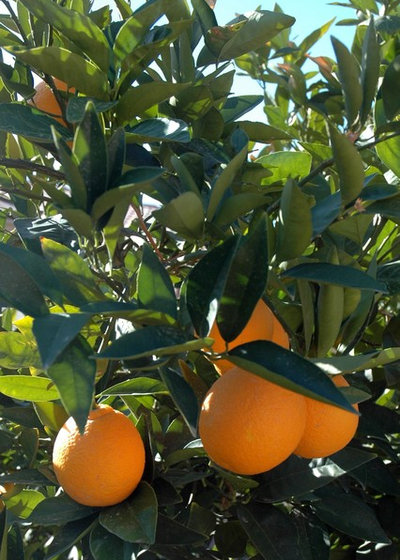
Noelle Johnson Landscape Consulting
Fertilize citrus trees. February is time to apply the first dose of fertilizer to citrus trees (which need to be fertilized three times a year). An easy way to remember when to fertilize is by holiday: Valentine's Day (February), Memorial Day (May) and Labor Day (September).
Citrus fertilizer should contain nitrogen, along with the micronutrients iron, manganese and zinc, which are essential for citrus health. Follow the directions on the fertilizer bag carefully; they will tell you how much to apply. Water the trees well after application.
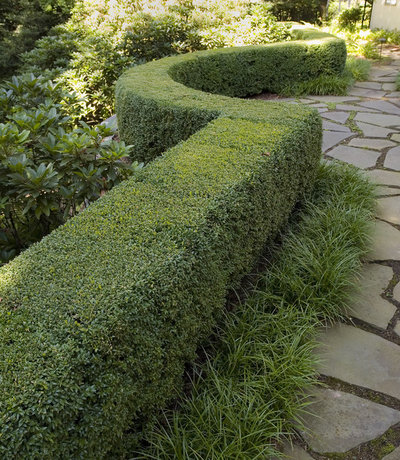
Liquidscapes
Mid- to high deserts (3,000 to 6,000 feet)
. Lightly prune evergreen shrubs, such as boxwood (
Buxus spp) and
dwarf yaupon (Ilex vomitoria); it will stimulate attractive new growth for spring.
Deciduous shade trees should be pruned in February too. Remove any diseased, dead or crossing branches.
Get a head start on spring by planting vegetable and flower seeds indoors eight weeks before the last average frost date. Beans, cucumbers, peppers and tomatoes do well when started indoors. Check a vegetable planting calendar for information on when to plant in your zone.
Shown: Boxwood
(Buxus microphylla)
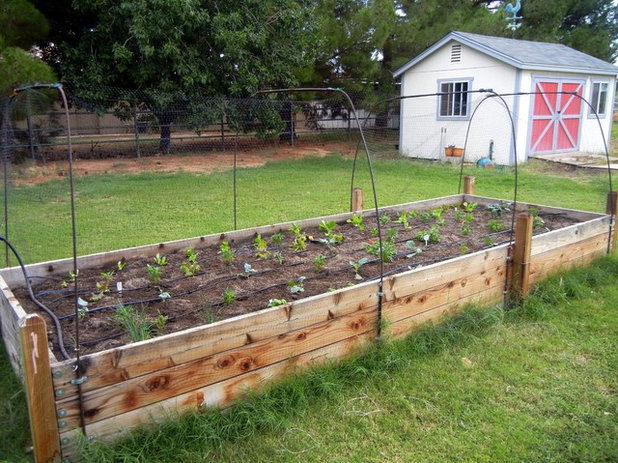
Noelle Johnson Landscape Consulting
Upper elevations (over 6,000 feet). It's time to start browsing your seed catalogs and decide what you will plant in your vegetable garden later in spring. Don't have one yet? This is a great time to start planning to add edibles to your garden. Select an area that receives at least six hours or more of sun a day.
Deep water your lawn, trees and shrubs. Even though it is winter, they still need water. This should be done on a day warmer than 40 degrees Fahrenheit so the water doesn't freeze. Water trees to a depth of 3 feet, shrubs to 2 feet deep and a lawn to 6 inches deep. Use a soil probe or a piece of rebar to help determine how deeply you are watering.
See how to build a raised garden bed
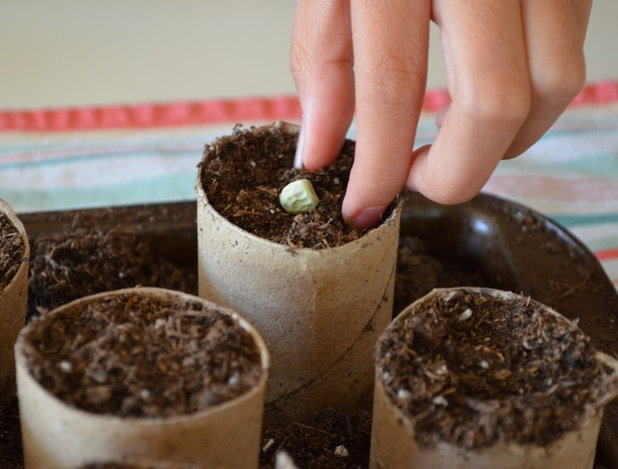
Noelle Johnson Landscape Consulting
Start seeds in biodegradable containers. Did you know that many household items make great containers to start seeds indoors? Try using toilet paper rolls, cut in half, cardboard coffee sleeves or even eggshells.
After the danger of frost has passed, simply plant your seedlings, biodegradable container and all, in the ground. Both cardboard and eggshells will decompose quickly in the soil.
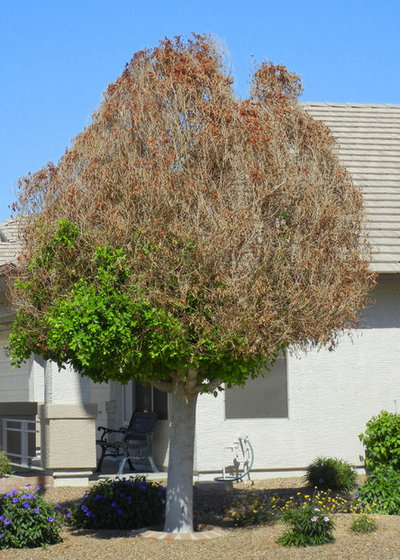
Noelle Johnson Landscape Consulting
Wait to prune frost-damaged growth. While it may be tempting to prune away ugly, frost-damaged growth from your trees, shrubs or perennials — stop. Pruning too early in the season stimulates new growth that makes your frost-tender plant more susceptible to damage from the danger of future frosts. Wait until the danger of freezing temperatures has passed before you dust off your pruning tools.
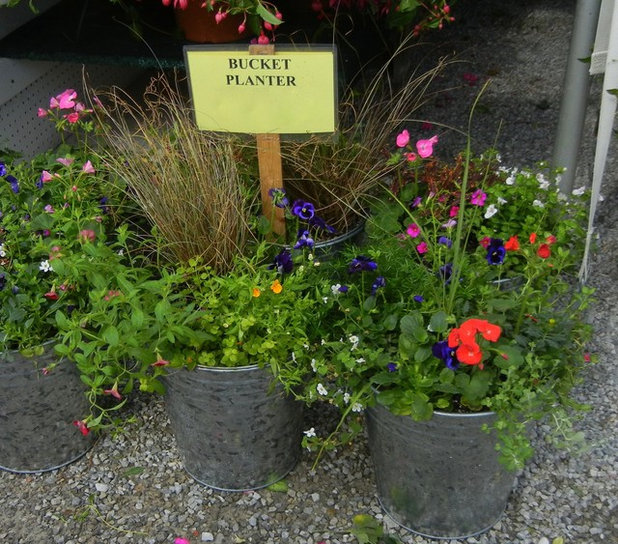
Noelle Johnson Landscape Consulting
Have fun with containers. Get creative when selecting containers for your cool-season flowering annuals. A metal bucket, an old watering can, a wheelbarrow or even an old pair of boots can add a touch of whimsy to the garden when filled with annual flowers. Just be sure to make holes in the bottom for drainage.
Try pairing
violas with alyssum,
petunias with
snapdragons, or
geraniums with
Lobelias for beautiful color combinations.
Fertilize annuals with a liquid fertilizer at least once a month to encourage continuous flowering.
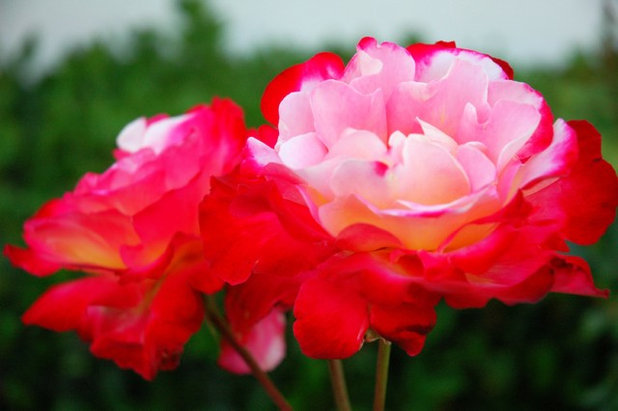
Noelle Johnson Landscape Consulting
Plant bare-root roses. Winter is the time to plant bare-root roses in the desert regions of the Southwest.
- Select grade-1 roses, which have at least three large canes (branches).
- Dig a hole 2 feet wide and amend the soil with compost and bonemeal before planting.
- Cover the top of your newly planted bare-root rose with a mound of compost or wood shavings to keep the canes from drying out.
- Remove the compost once you see new growth appear.
- Do not fertilize new roses until they have flowered for the first time in spring.
Shown: Hybrid tea rose 'Double Delight'
Get ready for March. Spring is on its way. Sharpen your pruning tools and get ready to check your irrigation system.
More regional garden guides





